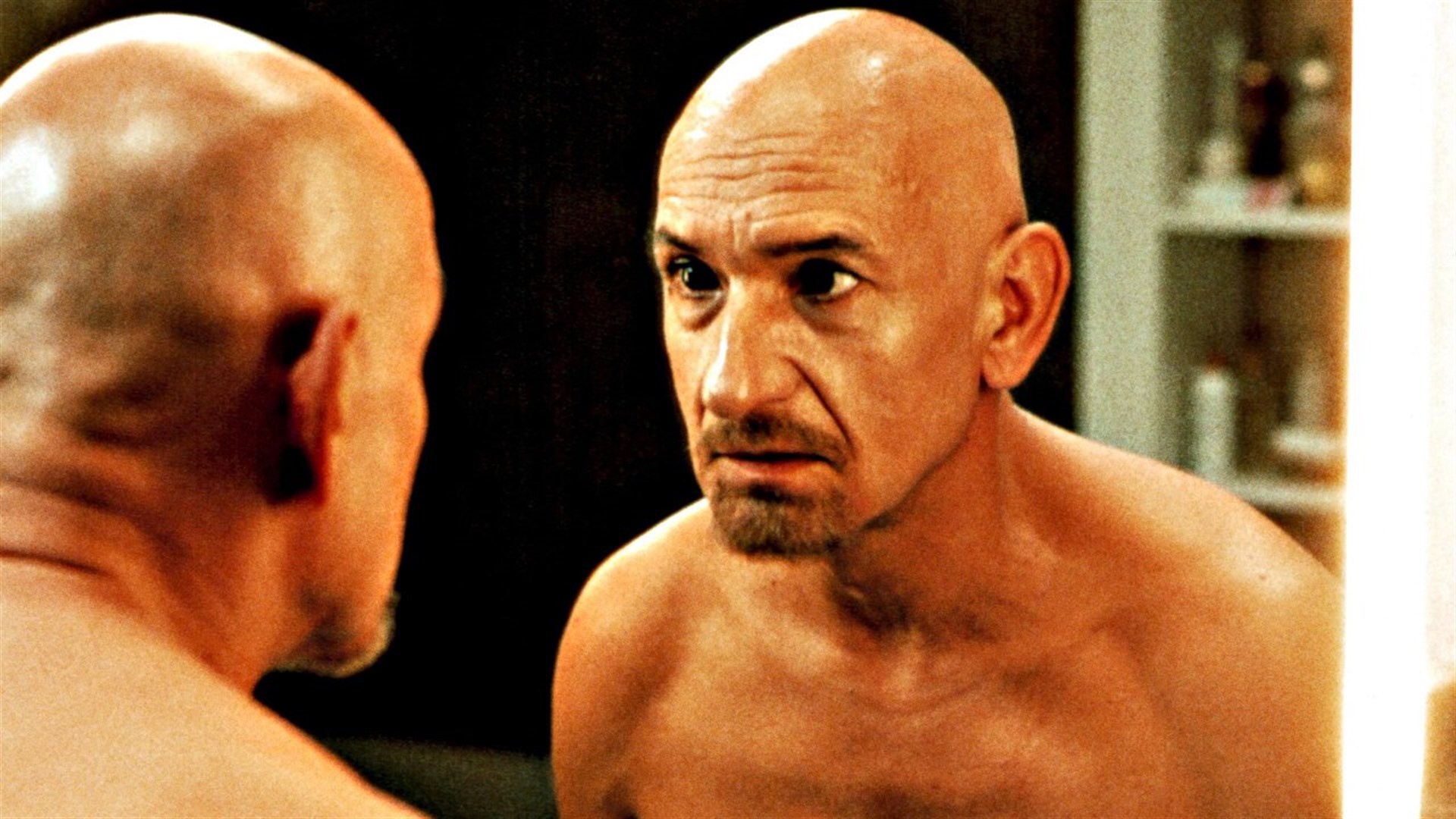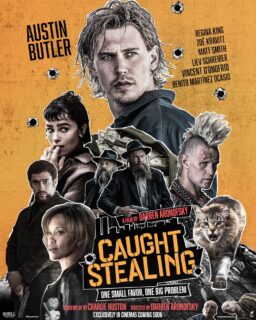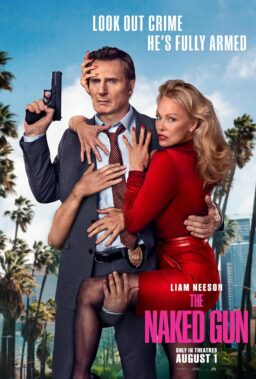Director Jonathan Glazer mines beauty in the darkest of caves. In both feature films and music videos, there’s a pervading sense of eeriness and anxiety, a feeling that something wicked is around the corner. Glazer doesn’t work with conventional plot structure. Instead, he builds tension with off-kilter visual effects, juxtaposing beautiful fantasies with harrowing nightmares. In his films, the characters have decided to ignore the past that haunts them until a monster appears.
The most obvious example of Glazer’s recurring theme came 20 years ago in “Sexy Beast,” the Ben Kingsley crime drama that opened stateside in June 2001 after a September 2000 premiere at the Toronto International Film Festival. Kingsley stars as Don Logan, a British gangster who travels to Spain to pick up the newly-retired Gal Dove (Ray Winstone). Life before Logan is “fan-dabba-dozzy-tastic” as Dove bakes in the sun. Glazer shows how magical life is with an abstract scene where Dove and his wife Deedee (Amanda Redman) swim in an embrace over the villa, under the moonlight.
The romance fades as soon as we see Logan. In the commentary, Kingsley compared Logan’s introduction to a scud missile. Logan’s first lines are a brash jolt, intended to make everyone around him uncomfortable: “I’ve gotta change my shirt. It’s sticking to me. I’m sweating like a c***.” For all the memorable lines Logan spits—from the charges of “Yes!” and “No!” to the “compliments” of his former lover Jackie (Julianna White) having a “nice telephone voice”—we get a sense of how much of a monster Logan is in Glazer’s use of dream sequences.

Kingsley said in the commentary track that his one-line pitch for the movie was, “Once upon a time, there was a man who thought he was very happy; so, the Gods sent to him the unhappiest man in the world.” This undersells Logan’s aura. Logan is PTSD personified for Dove, Deedee, Jackie, and Aitch (Dove’s ultra-tanned friend and Jackie’s new lover, played by Cavan Kendall). The night before Logan lands, Dove dreams he’ll be shot down by a rabbit-eared, man-sized demon that is carrying an Uzi. Another dream at the end of the film shows how even after Logan’s demise, not even that beast can phase the cigarette-puffing gangster. The demon growls as he kicks Logan’s coffin open. The monster is annoyed that he’ll have to live with Logan—as if the two will have to compete to live inside Dove’s brain. But there’s no competition between a figment of Dove’s imagination and the very real Logan. The gangster lives by a headstrong motto: “Where there’s a will—and there is a f****** will—there’s a way—and there is a f****** way.”
Anyone expecting some stylish gangster flick about one last job like the triple heist of Steven Soderbergh’s “Ocean’s Eleven” would be disappointed by the lack of cool in “Sexy Beast.” But for those following Glazer’s career, “Sexy Beast” is the boldest, loudest display of people living with monsters. What made “Sexy Beast” an anticipated film then was seeing how Glazer would translate similar themes to the big screen after directing music videos for bands like Radiohead, U.N.K.L.E., and Jamiroquai.
In 1996’s video for Radiohead’s “Street Spirit (Fade Out),” Glazer experiments with time-lapse and slow-motion, sometimes simultaneously. Shot in black and white, the video is about the space between life and death as it starts with lead singer Thom Yorke jumping in slow-motion off a trailer. Glazer then cuts to Yorke lying head-up on a caved-in car, and what follows is a montage of gripping imagery. The band sits outside a few trailers in the desert as lightning cracks in the background. Experimental dancers jump and move gracefully. A shirtless child comes face-to-face with a frothing, barking dog. Later, that same child watches in wonder as a chair is flung in slow-motion in front of him. A man pours paint on his head and tries to throw some at Yorke. As much as the video is Glazer seeing what tricks he can use, he creates tension between the sped-up and slowed down images. Each subject in the video is either running from something, fidgeting, or in mourning (while drummer Phil Selway watches feathers blow in front of his face as if The Flash stole a bird Selway was once holding). Is this heaven? Is this hell? Every frame is lined with as much beauty as there is the sense that something devastating is happening.
In 1997, Glazer won the MTV Video Music Award (a big deal at the time) for “Video of the Year” for his work on Jamiroquai’s “Virtual Insanity.” Here, vocalist Jay Kay moves to avoid a constantly-moving set. As much as the video is memorable for Kay’s plush, black top hat and choreography, Glazer adds that eeriness to the affair with cuts to black crows, roaches, and blood seeping from the floor. The final shot seems like a happy accident as Kay smiles through his teeth as if waiting to hear that the crew needs another take of the entire thing. The choreography is impressive, but so is the sense of claustrophobia and danger—something that arguably wouldn’t exist had Glazer not directed the video.
The approaching evil motif was more obvious in follow-up music videos for Radiohead’s “Karma Police” in 1997 and U.N.K.L.E.’s “Rabbit in Your Headlights” in 1998. Glazer’s theme is given center stage in “Karma Police” as the camera is located in the middle of a car, as if shot from the point of view of a driver. Soon, the car is approaching a man who is running for his life. Dread rises as Yorke appears in the backseat to sing the chorus, “This is what you get when you mess with us.” The video is even more claustrophobic than “Virtual Insanity” as the camera rarely moves out of the car.
In “Rabbit in Your Headlights,” the sense of dread is again established quickly with drivers honking at a man who is pacing the middle of a tunneled highway and yelling, “Sinner!” among other incoherent phrases. The man is hit by passing cars, each blow worse than the last, but he gets up and keeps rambling down the road. As the man has reached his maximum power, the video ends with one final car hitting him but combusting and splitting down the middle. The destroyed becomes the destroyer. In both videos, the violence and anxiety is more upfront, but because of Glazer’s eye, the camera work and visual effects, it’s hard to look away from that destruction.
After “Sexy Beast,” Glazer’s subsequent films weren’t as bloody or vulgar, but they were nevertheless as anxiety-ridden, shocking and beautiful. The director’s 2004 follow-up “Birth” was too-casually panned because its plot revolves around Nicole Kidman’s Anna falling in love with a 10-year-old boy who says he’s the reincarnation of her dead husband. Other romantic films dealing with reincarnation might go a more hopeful or saccharine route. In contrast, “Birth” is a tense portrait of a woman who hasn’t fully grieved the death of her former husband, Sean. Those other socialites and friends who ignored Anna’s pain can’t ignore a boy who, without hesitation, says he’s Sean.

In 2013, Glazer returned to critical acclaim with the more abstract, sci-fi thriller “Under the Skin,” starring Scarlett Johansson as an alien with a female body, roaming Scotland to dine on men in a tar-black world. Those themes of two worlds working against each other and foreboding dread are easily noticed from the outset as Johansson lures men into going home with her. Throughout the course of the movie, however, Glazer shows how the alien is grappling with and becoming more human after meeting “the deformed man,” played by Adam Pearson, an actor with neurofibromatosis. The manipulative alien is shocked out of the cold indifference. Still, Glazer keeps the tension building after her character turns—a difficult task for a movie that spends most of its time showing how Johansson crinkles, snaps and crushes predatory men.
What the imagination conjures as nightmarish monsters is nothing in comparison to those seen in Glazer’s works. Of all of them, Logan remains the director’s loudest and most brash monster, even 20 years after the debut of “Sexy Beast.” When viewed amidst the entirety of Glazer’s work, Logan is one of many unforgettable characters ready to burst from the screen and occupy your mind, rent-free. Once the façade of normalcy is broken, life is never quite as “fan-dabba-dozzy-tastic” as it seems.











